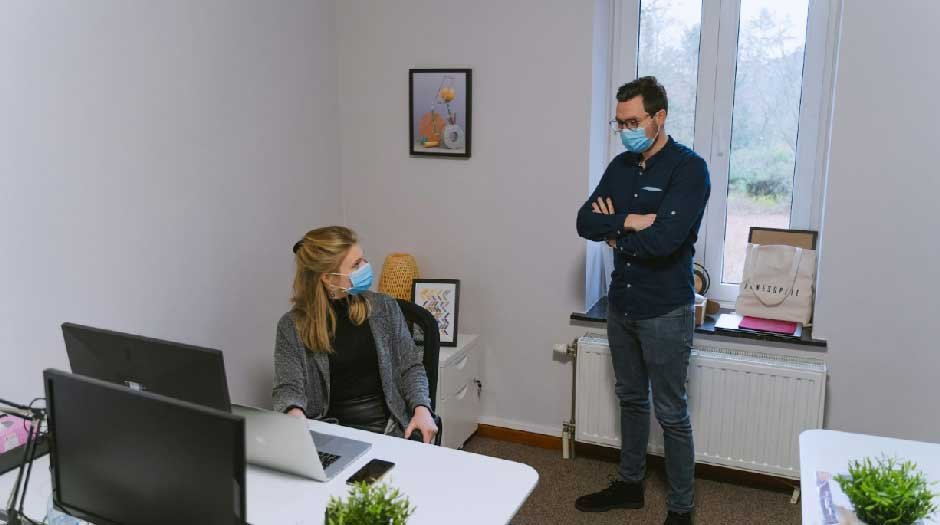Skip to the good bit
ToggleIn the high-stress, high-speed business world of the present, too much stress just is too prevalent. But when business stress crosses that threshold of transgression into the realm of transgression, it makes a quantum jump over into long-term psychological damage, where it can become something much, much worse: occupational PTSD or PTSD from work.
Whereas the common people associate Post-Traumatic Stress Disorder (PTSD) with combat during the military or personal trauma, occupational PTSD is very much a reality and an increasing phenomenon that has to be treated seriously. Employees who experience acute job stress, harassment, an aggressive work environment, or traumatic on-the-job events can develop symptoms that are equal to those in the case of regular PTSD symptoms.
In this blog, we’ll explore what workplace PTSD is, how it develops, its symptoms, and how individuals and organizations can cope and prevent it.
What Is PTSD from Work?
PTSD from work is a kind of mental disorder that arises because of any traumatic experiences at work. It can be because of workplace violence, sexual harassment, and verbal abuse or sometimes because of seeing any kind of traumatic event such as death at work or an accident.
PTSD is not a bad day at the workplace. It is a psychiatric illness which comprises:
- Intrusive memories or fixations about the trauma
- Avoidance of situations or places that remind the person of the trauma
- Mood and thinking disturbances which comprise
- Hyperarousal that can comprise irritability, sleep disturbance, or exaggerated startle response
These work symptoms can make it extremely hard for a person to work professionally and on an individual basis.
Origins of PTSD in the Workplace
Origins of occupational PTSD vary depending on work and workplace. Some of the most prevalent causative reasons are:
- Occupational violence
Physical violence, threats, or observing violence within the workplace can lead to deep psychological scarring. It is most keenly experienced in some professions directly related to health care, police, or customer service.
- High-Stress careers
Jobs that involve responding to emergencies, journalism, medical, or military service are likely to expose employees to the line of being eyewitnesses of traumatic events or stress incidents. This will eventually lead to the development of symptoms of PTSD in the long term.
- Sexual assault or harassment
Sexual harassment at work, especially if not addressed or handled clumsily by management, will eventually traumatize the victim to a large degree and result in PTSD.
- Industrial accidents
Severe trauma from a traumatic event, witnessing a fatal accident, or surviving to keep living a nearly fatal work-related event can produce post-traumatic effects like PTSD.
Symptoms and Signs of Work-Related PTSD
It is simpler to treat early with work-related PTSD identification. Some of the signs are:
- Flashbacks or nightmares of work-related accidents
- Fearful or anxious about working
- Panic or severe anxiety at work
- Numb or withdrawn
- Refusal to do work, work meetings, or work environment
- Sleep disturbance or restlessness
- Difficulty concentrating
- Depression, hopelessness, or isolation
They can be insidious or acute and the effects linger long even after quitting the abusive work environment.
Impact of PTSD in the Workplace
Untreated work PTSD has many significant and long-term impacts:
- Reduced productivity and job commitment
- Absenteeism
The emotional impact can even follow into everyday life, influencing interpersonal relationships, self-esteem, and general health.
Overcoming Work-Related PTSD
If you, or the individual in your life, is suspected of developing work-related PTSD, these are some things that may be helpful:
- Seek professional help
Trained therapists and mental health workers can intervene with supportive care using interventions like Cognitive Behavioral Therapy (CBT), Eye Movement Desensitization and Reprocessing (EMDR), or medication if indicated.
- Talk it out
Talking it out with empathetic friends, family, or co-workers can blow off steam and offer an objective perspective. You’re not alone, and support groups count.
- Establish boundaries
If you work, try to set emotional and physical boundaries as a self-defence routine. That could be staying away from negative people or turning off infuriating situations as much as possible.
- Take a time-out
A time-out or break now and then is sometimes necessary so healing can occur. Career change, sick days, or mental health days can be part of the healing process.
- Take care of yourself
Writing, healthy sleep, being present, and exercise may be a part of your recovery process. Fun activities and stress-free are good for emotional health.
Preventing PTSD at Work
Organizations play a critical causation and prevention role in workplace PTSD. Employers can:
- Create an open, inclusive work environment
- Make anti-harassment and anti-bullying policies inclusive
- Provide Employee Assistance Programs (EAPs) or mental health services
- Provide training in identifying and responding to workplace trauma
- Open up conversation and de-stigmatize discussions of mental health
Healthy workplaces are beneficial for employees—but it’s beneficial for business as well.
Conclusion
PTSD from work is not anything that can be ignored. It is a legitimate mental illness that requires proper understanding, action and empathy. With the right care and intervention, individuals can recover and easily regain their sense of peace and employers can easily make the workplace safe and empathetic.







